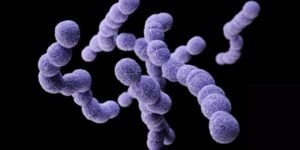I have Group B Strep. Is it safe to encapsulate?
As you may have seen there was  an article published at the CDC about a baby getting late onset Group B Streptococcus. The author suggested that it was caused by placenta encapsulation. If you haven’t read the article you can find it here
an article published at the CDC about a baby getting late onset Group B Streptococcus. The author suggested that it was caused by placenta encapsulation. If you haven’t read the article you can find it here
Group B Streptococcus is found in 25% of pregnant mothers. In the USA, pregnant people usually get tested for it at 37 weeks. If it’s negative at the time of the test, doesn’t mean you will be negative when baby is born and vice versa. However, if it is positive you typically get antibiotics as a prophylactic. Being GBS+ does not mean you have the infection, it just means you have a colonization.
Back to the article, here are the facts:
- Mom tested Negative for GBS at 37 weeks.
- Baby tested positive for GBS infection shortly after birth when baby showed signs of distress.
- Baby was discharged after 11 days of antibiotics.
- Baby returned to ER 5 days later with irritability. Baby tested positive for GBS infection. Released after 6 days of antibiotics.
- Mother’s breast milk was tested for GBS. It was negative.
- Treating physician asked to test the placenta pills. Pills were GBS positive.
- According to the article, they do not know how the pills were prepped but they found on the website of the encapsulator that s/he dehydrates at 115-160 degrees Fahrenheit.
- The author states- “No standards exist for processing placenta for consumption. Heating at 130°F (54°C) for 121 minutes is required to reduce Salmonella bacterial counts by 7 log10 (6). In this case, heating for sufficient time at a temperature adequate to decrease GBS bacterial counts might not have been reached. Consumption of contaminated placenta capsules might have elevated maternal GBS intestinal and skin colonization, facilitating transfer to the infant.”
- The article states they can not rule out transmission from other colonized family members
So those are the fact from the article. Here is my professional opinion.
If a placenta is cleaned and prepped at high enough and long enough temperatures GBS would not be present in the capsules. Anything ,lower than 160 degrees Fahrenheit is unacceptable. So, I do think this placenta was not prepped properly.
I do not think that was the reason for the second infection however. There was no GBS found in the mother’s breast milk. There would be no way for the baby to be reinfected from the capsules unless the milk was GBS + and/or the baby was taking the capsules. It seems much more likely that the first round of antibiotics didn’t kill the entire infection and it regrew. This is just my opinion from reading the article.
I think it’s also important to note that a CDC spokesman said this article is not their formal stance and it’s only the conclusion of the authors of the article.
Please feel free to email me at heather@placentaencapsulationservices.com with any questions or leave a comment.
